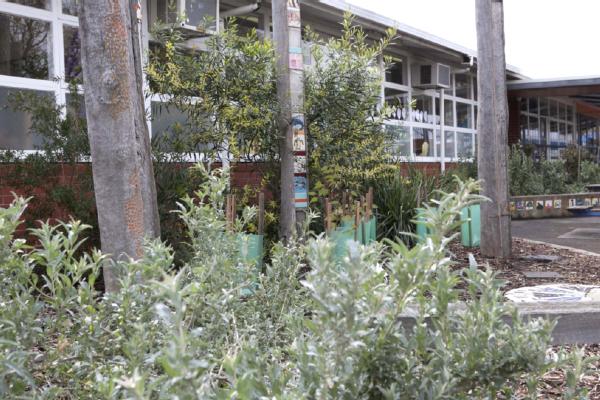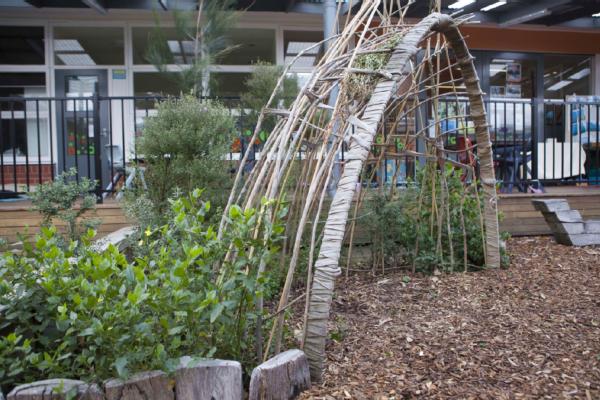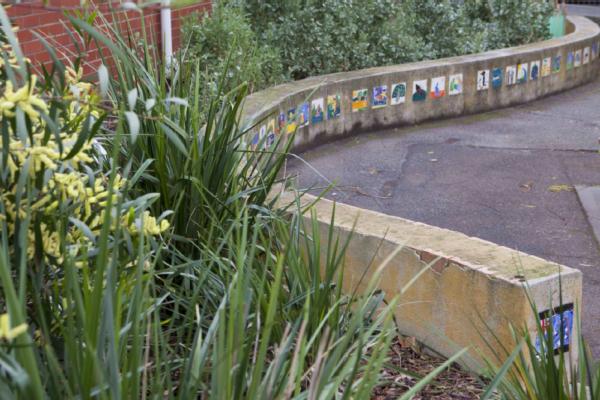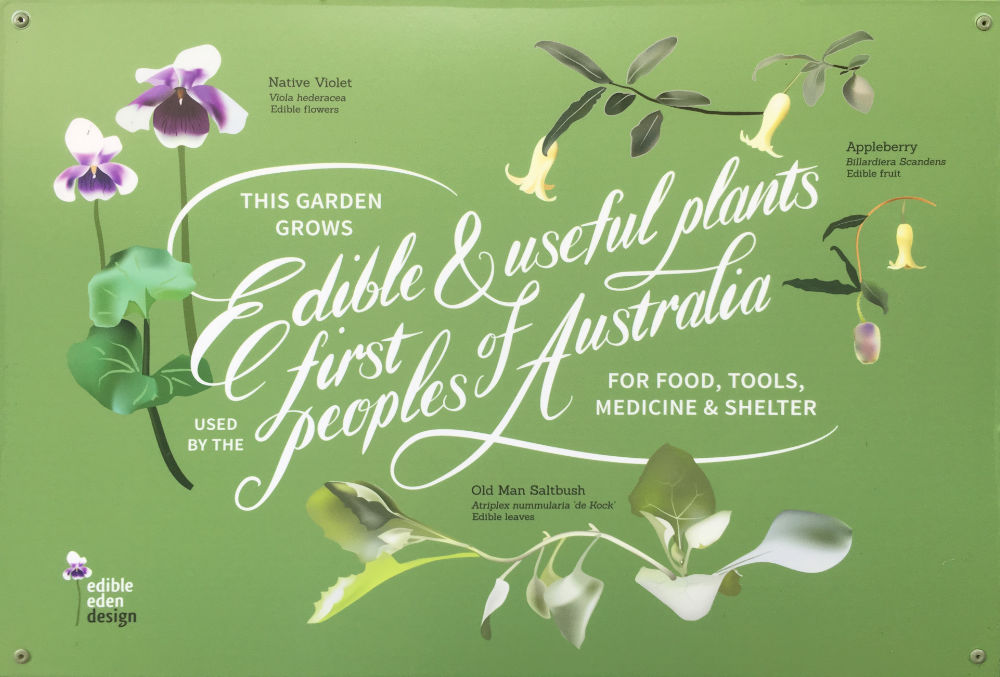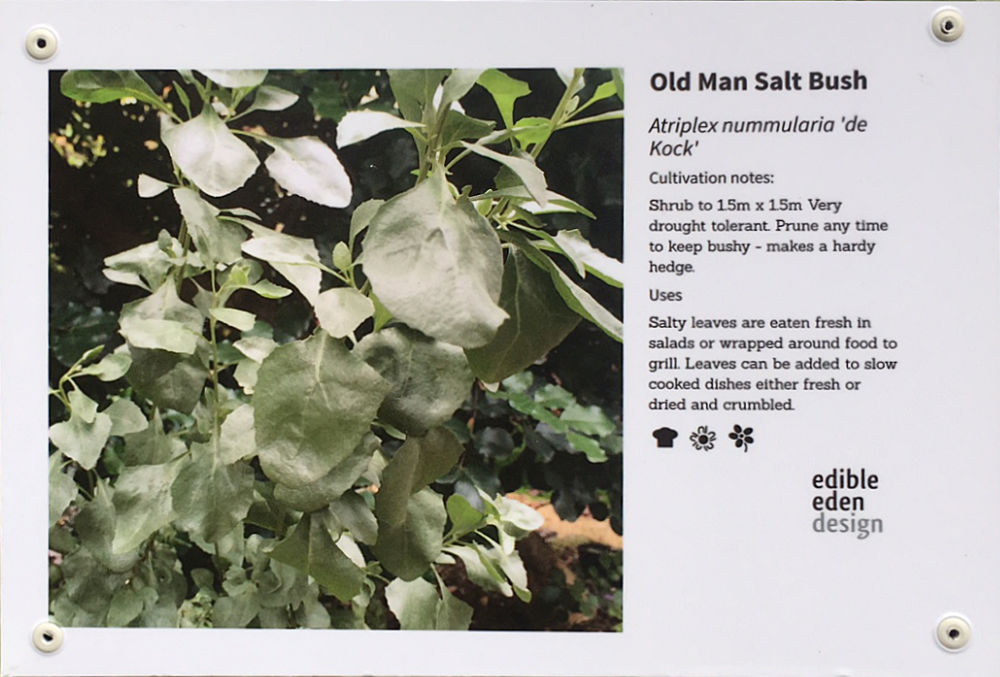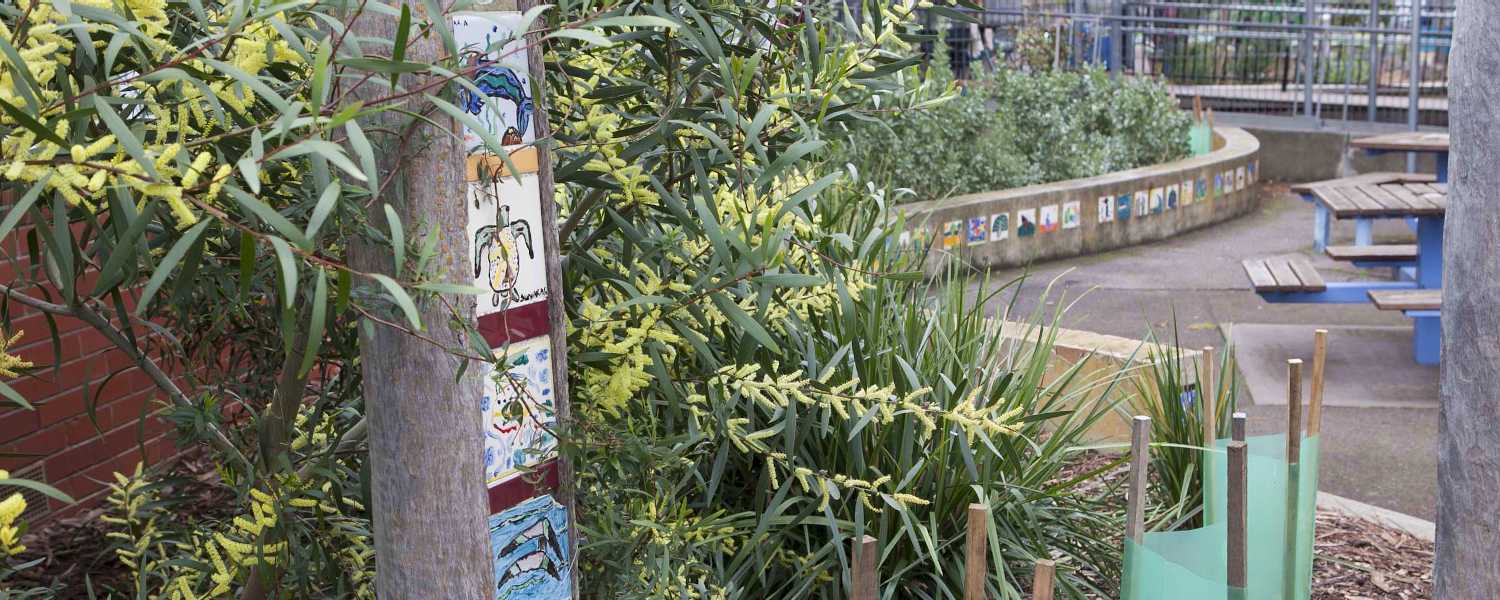
Project
Rain garden, bush food garden, and more…
Coolaroo South Primary School
Over the last few years, we’ve designed and installed a number of specialty gardens at this school, including a rain garden and frog pond, bush food garden, native nature play garden at the early learning centre, and foraging and edible flower gardens, as well as installing our own range of long-lasting plant signs to allow students teachers and the wider school community to learn about the plants and their uses.
Students have interacted throughout the process, from working on the frog pond and rain garden, to the many planting days, leading to a sense of ownership and pride in the gardens as well as a connection with nature even in this very urban environment.
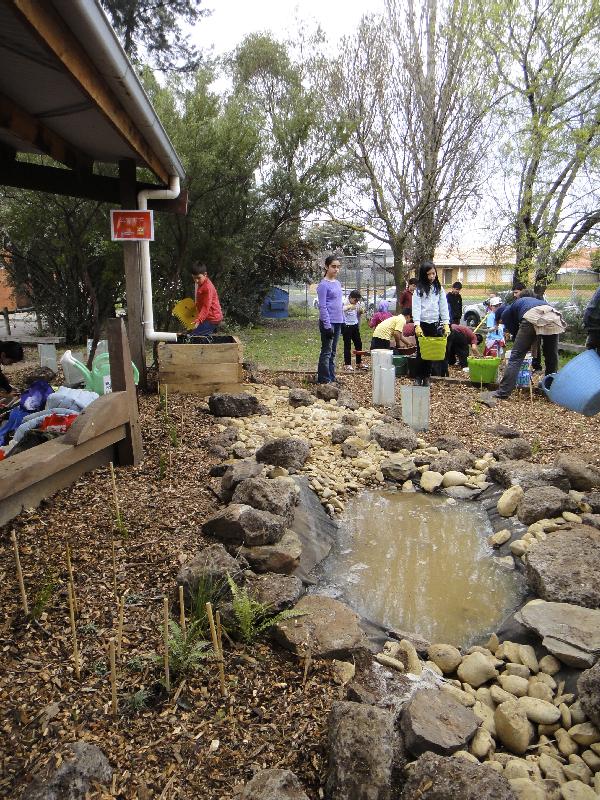
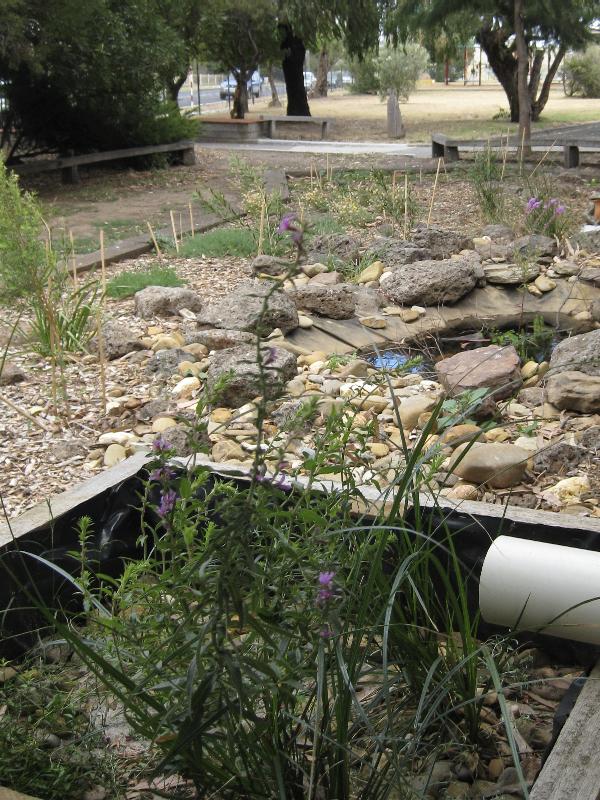
Raingarden and frog pond
Above you can see Year 6 students working with us to build a raingarden and frog pond. The raingarden filters rain water collected from the roof of a nearby structure through layers of sand, soil and clean gravel screenings. The water slowly makes its way through to the pond. Plants living in the raingarden remove excess nutrients, such as those from bird droppings on the roof, and are chosen to thrive in times of drought as well as temporary inundation. All plants are local indigenous species, chosen to enrich the habitat of the school environment and to attract local butterflies, birds, lizards and frogs.
Raingardens are one of our passions and specialties, for the contributions they make to sustainable water management and to improving local habitat. Karen is one of the few qualified instructors available in Melbourne to teach on the topic of raingardens for home gardens or school situations.
Contact Karen for further information on running a raingarden class or build workshop for your council or community group.

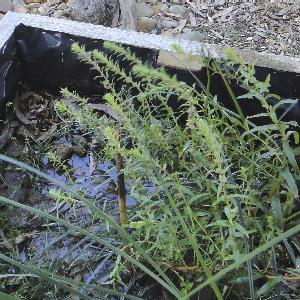

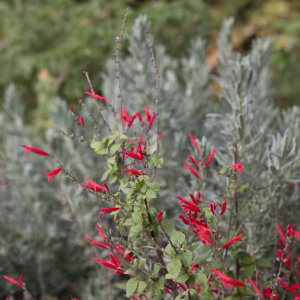

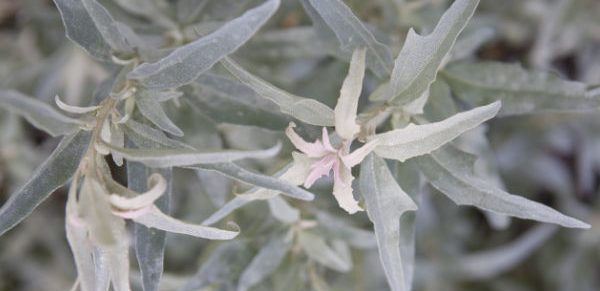
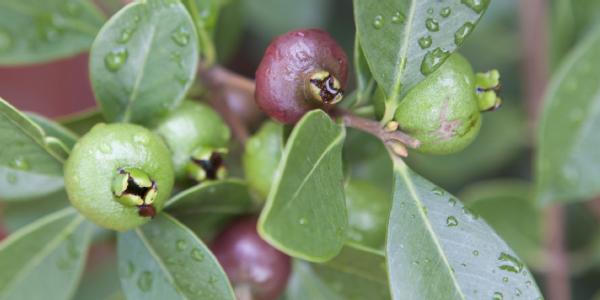
Strawberry guava
Strawberry guavas, Psidium cattleyanum, are one of our favourite choices for school gardens, as they can bear fruit when plants are quite young without any special pruning or care. Plants will fruit in full sun or shade, and are quite drought tolerant once established. The fruits are perfect for grazing on by children off the bush, as they are prolific, high in vitamin C and have large seeds which children are more likely to crunch up and eat than many adults. Strawberry Guavas have a tart plum like taste, and have a yellow sweeter-fruited sister, known as yellow cherry guavas, Psidium littorale.
Native plants for teaching and play
The gardens pictures below have native plants at their heart, but for two different reasons.
On the left, in the bush food garden, plants are grouped for recognition and learning, and our educational signage plays an important part. The garden’s intent is shown with a welcoming sign, and each plant grouping has a sign to explain its botanical name, common name and various uses.
On the right, in the nature play garden in the early learning centre at the school, plants are enjoyed by the children for their smell, sound, textures and tastes. Plants are used to create spaces; for playing in, running through or for sitting quietly.
